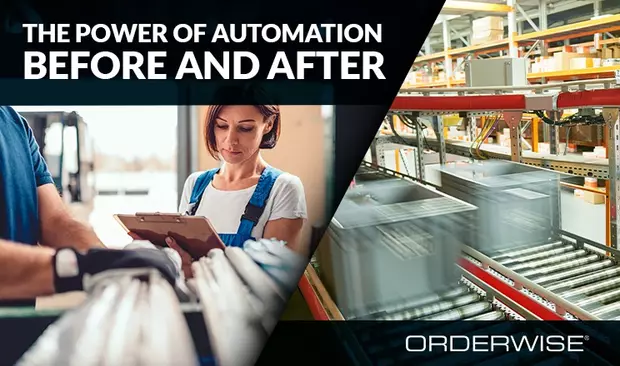The power of automation: Before and after

BPA (Business Process Automation) is the automation of multiple business processes and functions beyond simple data collection. From high level to low level tasks, BPA has the potential to bring together and automate processes across an entire business.
We hear a lot about the benefits that BPA can bring to a business – increased efficiency, higher production, and lower operating costs – but what do these changes look like specifically?
Using the experiences of our own customers, we’ve compiled some of the processes that undergo the most significant transformations. These examples have been taken from a range of industries and sector sizes, from large manufacturers to SME retailers.
From purchasing decisions made by eye, to decisions powered by data
Old process: Relying on staff judgement to decide what needs to be ordered, what stock is available, and which orders need fulfilling. Responsibility for purchasing stock was assigned to members of staff who visit bins with clipboards to see which items were running low. Orders were then placed by phone, fax, or email.
With automation: Purchasing is powered by real-time stock levels being automatically fed from the warehouse and integrations with multiple marketplaces. Automatic updates mean the relevant teams receive alerts on what stock is running low and when a purchase-order needs raising with a supplier.
Days’ worth of paper-based credit control and invoicing cut down to minutes
Old process: 12 hours per week spent managing credit control and invoicing via Excel spreadsheets.
With automation: A workflow is created for specific groups to identify key customers who need attention – emails are automatically fired out based on timings and certain criteria. Basic configurations are also put in place for invoicing to be a scheduled process, all based on specified rules, dates, and times.
From paper slips to powerful handheld devices for warehouse operators
Old process: All picks were conducted with paper slips that do rounds between several pickers in one day. As well as being wasteful and a poor use of time, these slips often got lost or misplaced.
With automation: Using the power of a mobile WMS (warehouse management system), the picking process becomes entirely paperless, wirelessly synchronising in real-time to a picker’s handheld device.
Eradication of congested data entry points
Old process: Queues of people waiting at computers during peak periods, ready to hand-type delivery addresses into an online consignment system.
With automation: Address information to delivery partners is automatically inputted from mobile handheld devices when items are scanned in. No more queues and no more manual input required.
Business-wide intelligence made available within a few clicks
Old process: Gaining quick visibility of the business was an arduous and time-consuming process. Hours were spent on excel inserting various bits of data to gain basic insights in different departments.
With automation: Business intelligence and reporting automatically gather and analyse the data running through the system. Hundreds of configurable reports and KPI dashboards allow the business to gain immediate insight into staff performance.
Interested in discovering more practical applications of BPA? Check out some of our latest case studies here.
Implementing automation into your strategy
With multiple studies already suggesting that automation is considerably less expensive than paying a person to do the same work, it’s hard to believe that so many businesses won’t embrace the automation available to them. Forrester suggests that business-wide automation can cut operating costs by 90% and says the use of automation is expected to release £90 billion in labour value this year.
With the money and time saved, businesses can focus on their core strategies of growth and expansion. Likewise, businesses can ensure they have technology there to keep things moving whatever the market happens to throw their way.
To learn why OrderWise can offer you automated software solutions that are right for your business needs, talk to one of our experts. Learn how we offer powerful applications that adapt to your requirements, whatever your size, scope or industry.